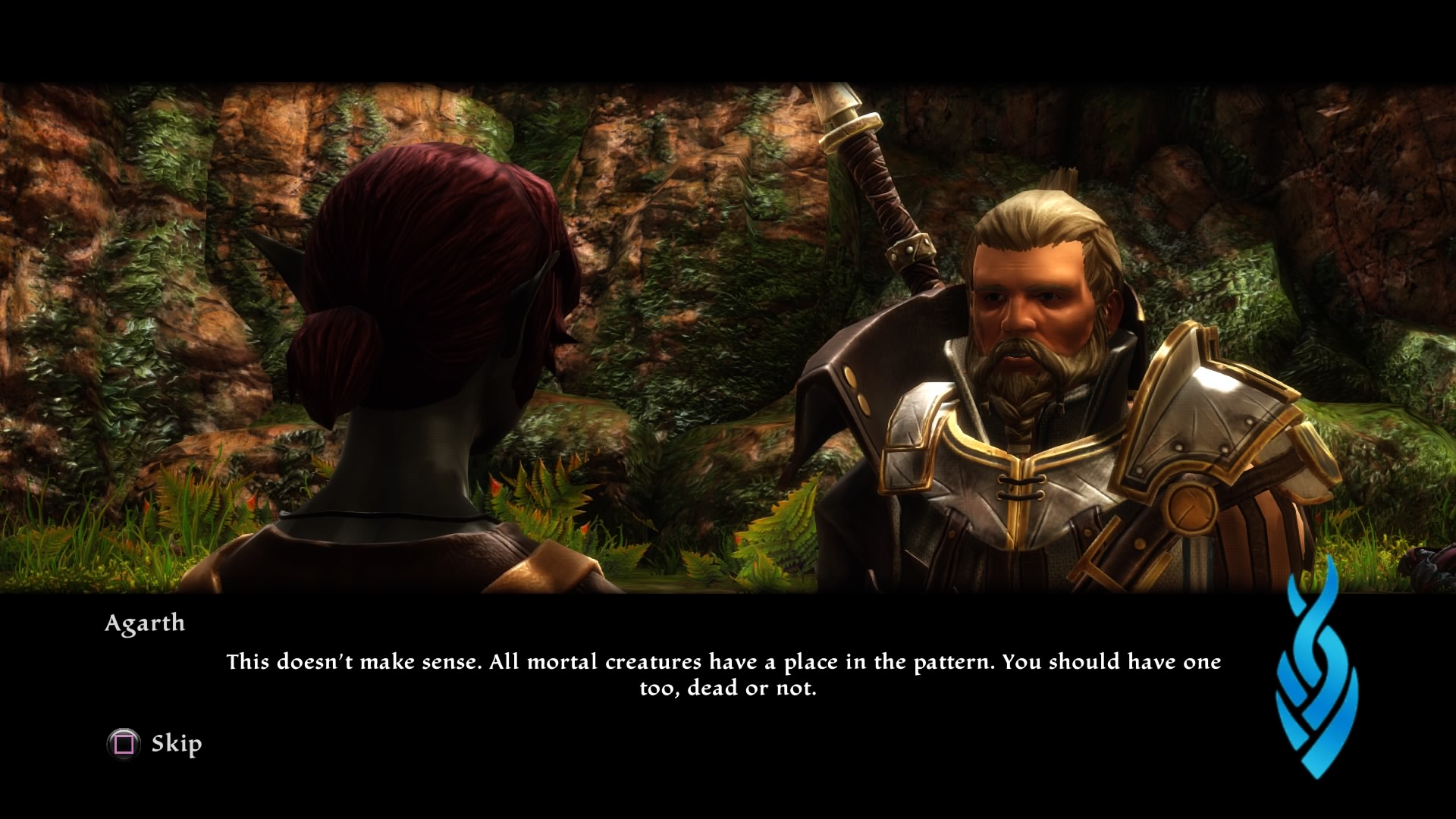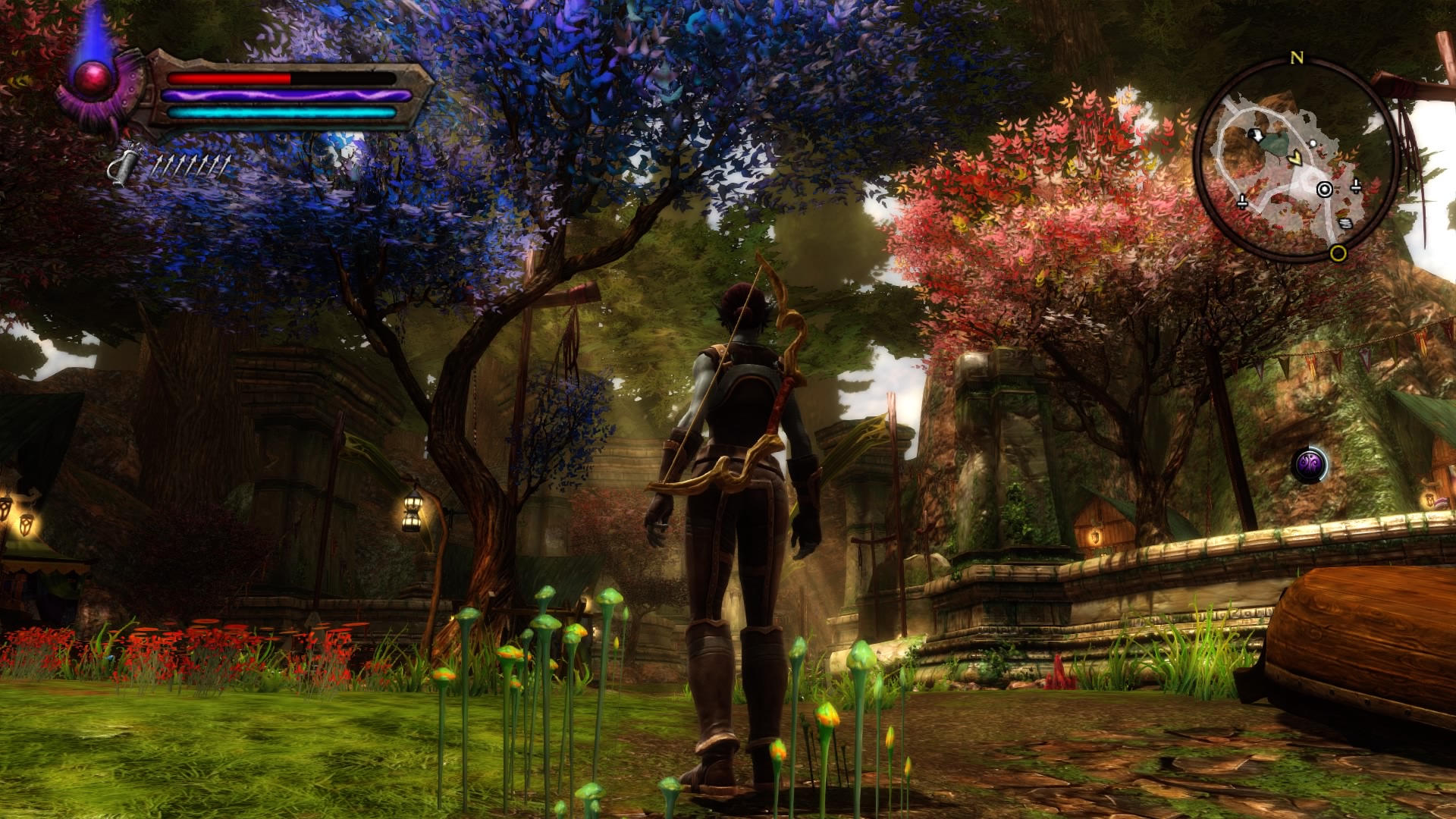Platforms:
Xbox One, PS4
Released:
September 8, 2020
Publisher:
THQ Nordic
Developers:
KAIKO, Big Huge Games
When Kingdoms of Amalur: Reckoning first released in 2012, it came and went very quietly. There were many fans who swore by the game, but other than that it was mostly forgotten. So you can only imagine the shock when a remaster was announced earlier this year. The game is a fantasy RPG with quick and punchy combat, that had the poor luck of releasing just a year after Skyrim. While Kingdoms of Amalur was certainly charming and worth playing, holding up against that juggernaut was next to impossible. So Amalur was forgotten… Until now.

Stepping outside of fate
Fate has an important role in Kingdoms of Amalur. Everyone has a fate, and there is a group of people called Fateweavers who can read the very tapestry of fate. While fate can be read, it cannot be changed, and you will ultimately see your own death. Not many people want to learn their fate for this reason. What is the point of learning what will happen in your future if there is nothing you can do about it?
This is where you come in. A group of gnomes have created a well that can supposedly bring people back to life, but it hasn’t done so for a long time until you come along. The Well of Souls has brought you back from death, and now you are the only person in the world who is living outside of fate. You are the fateless one; the only one who can re-weave the tapestry.
This is a really interesting origin for the main character, and throughout the game, different people marvel at your disconnect from the very fabric of the world. One of the first characters you meet is a fateweaver who knows when his own death is coming, leading to a hilarious scene in which you step in to change his fate like it’s nothing. Instead of being grateful, he is terrified to now be left in the dark about his new fate. He understands the gravity of what you’ve done, and meanwhile, the player character is just waiting for a thank-you for saving his life. The game tackles this fascinating plot point with both an acknowledgment of the frightening power the player has, alongside a good dose of humour.
Now that the player has been brought back to life and wrenched from their fate, they head out on a quest to figure out how they died and who they were before their death. Along the way, they can join factions, help all kinds of different races and slowly realise that their actions have had a big impact on the fate of the world. While you are free of fate, that doesn’t mean everyone else is. What you choose to change with your new ability will affect more than just yourself.

Aged like a fine wine
Despite being a remaster of a game from 2012, Kingdoms of Amalur Re-Reckoning still looks great, in a time where most games are scrambling to get as close as they can to photorealism. We’ve gotten to the point where the only next step is making pores and skin cells visible, and that is gross to imagine. That’s why Amalur is a breath of fresh (albeit re-released) air. The cartoony, chunky art style has survived more than well. It’s an aesthetic that manages to be timeless, unlike attempts at photorealism from the early PS3 era.
The main attraction here though is the environmental design. Vibrant colours and gorgeous light shafts grace every inch of Amalur’s world, while darker areas have bioluminescent plants and fungi – which is peak environment design as far as I’m concerned. At no point did the game’s age become distracting, except maybe on the facial animations for some of the characters, but it was completely inconsequential. The game isn’t so much a remaster as it is a port, but the textures and models are noticeably crisper and I found the game held 60fps on my PS4 more consistently than it did on my PS3.
Other than that though, it very much is the same experience that it was in 2012 – but that’s not a bad thing. While I would have loved a full remaster or remake, the game holds up so well that it barely even matters. The only missed aspect that really could have used an update is the menu and UI, which really show the game’s age and are a little clunky to use, but as someone who is still playing Dragon Age: Origins almost monthly, it matters very little.
“You are never restricted to certain weapons,
you can have one of each in your kit
and switch whenever you want, play
around and learn what your favorite is.”
Jack of All Trades
The combat system in Kingdoms of Amalur is great. It’s punchy, it’s fast, the controller vibrates on every hit. Importantly, it is also easy to learn. Your main attack is mapped to a single button, and you can also map a second weapon to another. The best part is that you can choose which is your main weapon and which is your sidearm, in the tutorial the game gives you a bow, but if you want your main weapon could be daggers and your secondary could be a great-axe. It’s all up to you.
The combat is highly customisable, there are three skill trees: Might, Finesse and Sorcery. From there though, you can mix and match between the three trees as much as you like. Your class is determined by which destiny you select, and that can be changed at any time. At first, you only have one option for each skill tree, but as you put more points into each tree you unlock the duel classes. I favoured myself a Warlock, a combination of both finesse and sorcery, though virtual every different combination is available. Finesse/Might, Might/sorcery even all three later down the track! It’s all based on your own preferences.
The weapons are also amazingly varied. There’s your stock standard: swords, daggers and staves. However, there are also some weapons that you can only find in Amalur, like the magic-infused frisbees, the chakrams, or the quickfire spinning faeblades. You are never restricted to certain weapons, you can have one of each in your kit and switch whenever you want, play around and learn what your favourite is. There is so much freedom of choice.

Fights in Amalur are quick and full of movement. You have a dodge and a quick wheel with all your extra abilities available alongside basic hacking and slashing, but as you leave up the hacking and slashing becomes a lot less basic. You get combos based on perfect timing or hold attacks that deal heaps of damage but leave you vulnerable as you charge them up. The combat isn’t basic, it’s easy to grasp, but there is so much to do and learn.
Finally, your finisher move. After defeating enough enemies, you are able to enter Reckoning mode (get it?) and in this mode, the world slows down, your damage goes up and everything is purple. This is such a cool moment every time it happens, because of the plot implications. Entering reckoning mode is the player stepping outside of fate, killing enemies who weren’t meant to die at that moment, changing the fate of the word with the tip of blade. It’s metal as hell.
9
Amazing
Positive:
- Interesting story that explores the nature of fate itself
- Beautiful environments rich in colour and ripe for exploration
- Punchy combat that feels fun even after hours of play
- Numerous customisation options to suit your own play style
Negative:
- Occasionally shows its age
I love Kingdoms of Amalur, and Re-Reckoning hasn’t changed that. This is a game that wasn’t loved enough at its original release and I pray that it gets all the attention it deserves this time around. If you are a fan of action RPGs I implore you to give Amalur at least a moment of your time. You won’t regret it, I promise.





